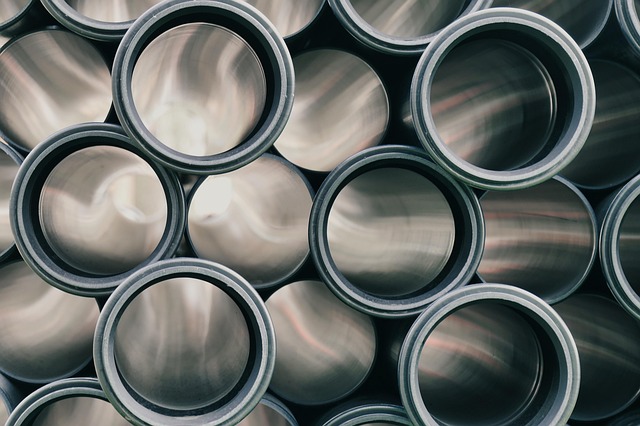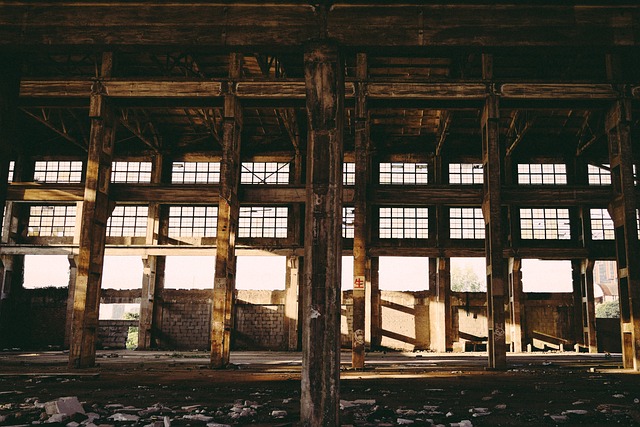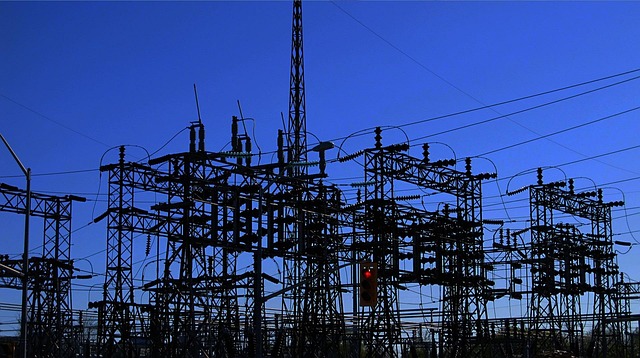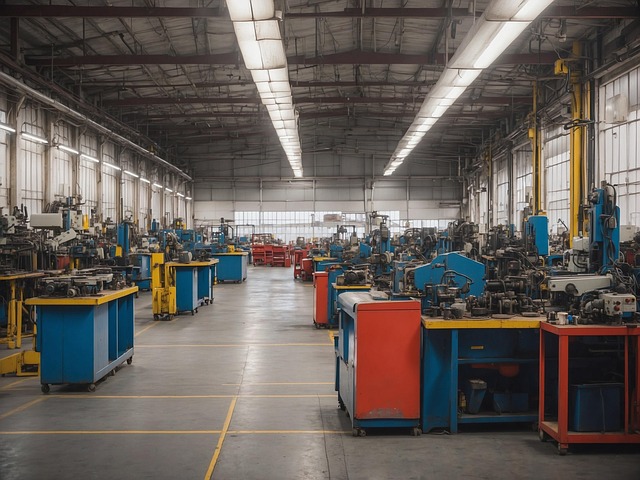In the competitive industrial property lending market of Colorado, interest rates are a pivotal factor affecting financial opportunities for businesses and investors. Economic dynamics like market demand, capital availability, risk assessment, and regulatory policies influence these rates, making them variable among lenders. Understanding these fluctuations is crucial for strategic decision-making in Colorado's vibrant industrial sector. Favorable interest rates can significantly reduce operational costs, stimulate investment, enhance property value, and attract tenants. Lenders strategically set rates based on economic health, sector stability, and borrower profiles, adapting to market conditions such as growth or downturns. Securing competitive rates through pre-approval and specialized lenders is key to maximizing returns on industrial property investments in Colorado. Strategic partnerships and collaboration can also lead to better loan terms, including reduced interest rates.
In the competitive landscape of industrial property lending in Colorado, understanding and securing competitive interest rates can be a game-changer for investors. This article delves into the factors influencing commercial real estate loan rates in Colorado, highlighting the benefits of low-interest rates for industrial property investments. We explore how lenders determine interest rate structures and offer strategic insights to lock in competitive rates. Additionally, case studies showcase successful efforts to lower interest costs in Colorado’s thriving industrial market, providing valuable lessons for savvy investors.
- Understanding Competitive Interest Rates in Industrial Property Lending Colorado
- Factors Influencing Interest Rates for Commercial Real Estate Loans
- Benefits of Securing Low-Interest Rates for Your Industrial Property Investment
- Navigating the Landscape: How Lenders Determine Interest Rate Structures
- Strategies to Lock In Competitive Rates for Your Colorado Industrial Property Purchase
- Case Studies: Success Stories of Lowering Interest Costs in Colorado's Industrial Market
Understanding Competitive Interest Rates in Industrial Property Lending Colorado

In the realm of industrial property lending Colorado, competitive interest rates play a pivotal role in shaping the financial landscape for businesses and investors. These rates refer to the return or compensation that lenders offer borrowers for investing their funds in industrial properties within the state. Given the dynamic nature of Colorado’s economy, characterized by a vibrant industrial sector, understanding these rates is essential for both property owners and prospective buyers or renters.
Competitive interest rates in industrial property lending are influenced by various economic factors, including market demand, supply and availability of capital, risk associated with investments, and regulatory policies. Lenders, such as banks and credit unions, offer varying rates based on these considerations, aiming to attract borrowers while ensuring profitability. For businesses seeking financing for expansion or acquisition, navigating these rates is crucial to secure the best terms, ultimately impacting their operational costs and strategic decisions in Colorado’s competitive industrial market.
Factors Influencing Interest Rates for Commercial Real Estate Loans

Interest rates for commercial real estate loans in Colorado, specifically for industrial property lending, are influenced by several key factors. One primary determinant is the overall economic climate, including the health of the local and national economies. In a robust economy, lenders may offer lower rates to encourage borrowing and investment, which can be beneficial for businesses looking to expand or refinance their industrial properties in Colorado.
Another significant factor is the supply and demand dynamic within the commercial real estate market. High demand for industrial space coupled with limited availability can lead to higher interest rates as lenders recognize the increased risk and potential for rent fluctuations. Conversely, a soft market might result in more lenient lending terms as banks seek to stimulate activity and prevent defaults on Colorado industrial property loans. Additionally, regulatory changes at both the federal and state levels play a role, as policies related to banking, creditworthiness assessment, and capital requirements can directly impact the cost of borrowing for commercial real estate ventures.
Benefits of Securing Low-Interest Rates for Your Industrial Property Investment

Securing low-interest rates for your industrial property investment in Colorado offers significant advantages that can positively impact your bottom line. One of the key benefits is cost savings; lower interest means less money spent over the life of the loan, making it an attractive option for investors aiming to maximize returns. This is especially true for long-term financing, where the effect of compound interest becomes more pronounced.
Additionally, low-interest rates encourage investment in the industrial sector. With favorable borrowing conditions, property owners can reinvest savings into improving their facilities, enhancing productivity, and attracting tenants. This not only strengthens the local economy but also positions industrial properties as sound investments in Colorado’s competitive real estate market.
Navigating the Landscape: How Lenders Determine Interest Rate Structures

In the competitive world of industrial property lending Colorado, understanding how lenders set interest rate structures is key for borrowers and investors alike. Lenders carefully navigate a complex landscape that considers various economic factors, market trends, and risk assessments to determine their rates. One primary determinant is the overall health of the economy; during prosperous periods, interest rates tend to rise as lending becomes more accessible and attractive. Conversely, in economic downturns, rates may decrease to encourage borrowing and stimulate investment.
Another crucial aspect is the specific sector or property type. For instance, industrial property loans often factor in the stability and growth potential of the manufacturing or logistics industry. Lenders may offer competitive rates for properties in regions with a strong industrial base and positive economic projections. Additionally, loan-to-value ratios, borrower creditworthiness, and the length of the loan term significantly influence interest rate structures. These considerations ensure that both lenders and borrowers are aligned with fair and sustainable terms tailored to their unique circumstances within the dynamic Colorado market.
Strategies to Lock In Competitive Rates for Your Colorado Industrial Property Purchase

When considering an industrial property purchase in Colorado, locking in competitive interest rates is crucial to maximizing your investment returns. One strategy involves securing pre-approval for a loan before shopping for properties. This not only demonstrates your financial strength to potential sellers but also gives you an edge in negotiating prices and ensures access to the best available rates. It’s recommended to work with experienced industrial property lenders who specialize in Colorado market trends, as they can guide you on the most suitable financing options tailored to your needs.
Additionally, keeping a close eye on market fluctuations is essential. Interest rates in the industrial property lending sector can be influenced by various economic factors, including inflation and government policies. By staying informed about these changes, you can time your purchase strategically. Consider setting up alerts for rate movements and consult with your lender regularly to discuss refinancing options if rates drop significantly after securing your initial loan, allowing you to take advantage of more favorable terms.
Case Studies: Success Stories of Lowering Interest Costs in Colorado's Industrial Market

In the competitive landscape of industrial property lending in Colorado, several success stories stand out, offering valuable insights into strategies for lowering interest costs. One notable case involves a major logistics company that secured a significant loan to expand its distribution network across the state. By leveraging their strong financial standing and presenting a robust business plan, they successfully negotiated a lower interest rate through a strategic partnership with a local bank specializing in industrial lending. This approach not only saved them millions in long-term interest expenses but also provided them with more capital for further growth initiatives.
Another successful story comes from a group of developers who partnered with several small and medium-sized businesses to create a diversified portfolio of industrial properties. By aggregating their purchasing power, they were able to secure better terms on loans, including lower interest rates, from both traditional financial institutions and alternative lenders. This collaborative approach not only enhanced their negotiating position but also fostered a vibrant industrial market in Colorado by making high-quality space more accessible and affordable for emerging businesses.
In conclusion, competitive interest rates play a pivotal role in shaping the landscape of industrial property lending in Colorado. By understanding the factors influencing these rates and employing effective strategies, investors can secure substantial savings on their commercial real estate loans. Navigating the intricate dynamics of lenders’ interest rate structures is key to unlocking benefits that enhance the profitability and long-term viability of industrial property investments in Colorado.
